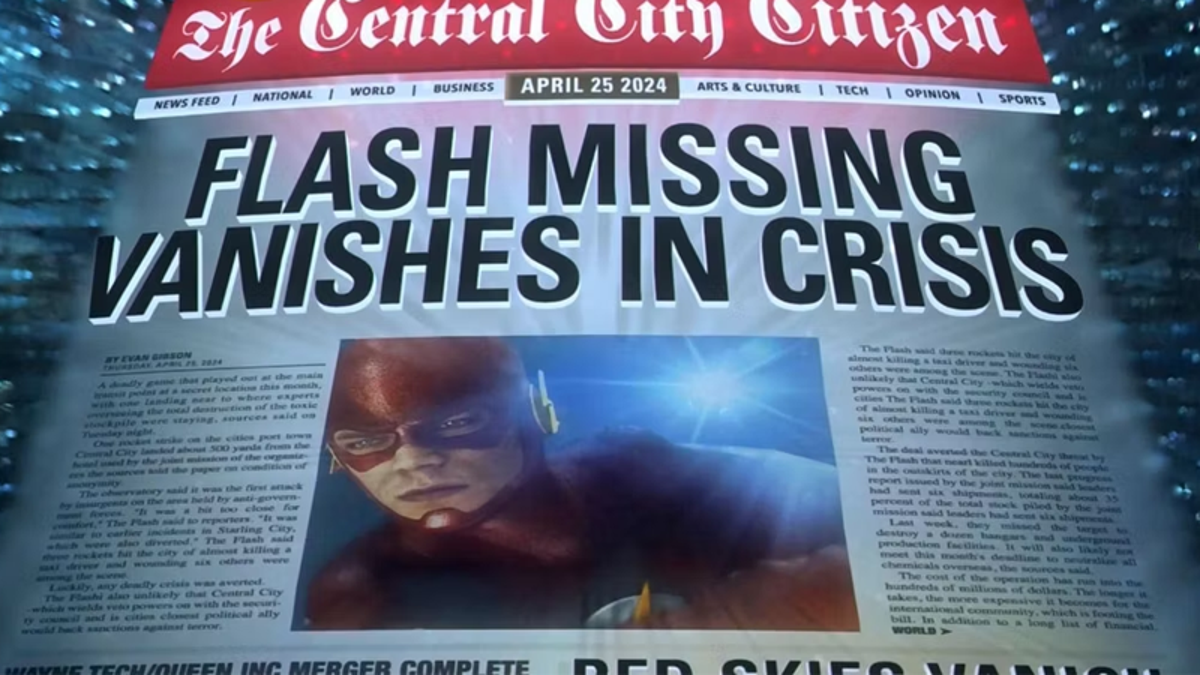When The Flash launched in October 2014—the second project of the CW’s bold attempt to flesh out its own superhero cinematic universe—its premiere episode ended with a bold statement: not only would the series be still going in a decade’s time, it would have grown enough to tackle one of the most iconic stories in DC Comics history, Crisis on Infinite Earths.
What Did the Actors Bring to Their Back to the Future: The Musical Performances?
Ten years later, we’ve arrived at that fateful April 25, 2024 date—and you know what? The Flash was kind of right, give or take a few temporal quibbles.
Over the years as The Flash delved more and more into the time-bending shenanigans of the Speed Force, that infamous premiere stinger changed and developed—who wrote the story twisted, sometimes it vanished, sometimes it still happened, and then, of course, the show actually changed it again when it decided to shunt up its timeline and do Crisis on Infinite Earths in 2019, having Barry vanish in crisis a full five years earlier than predicted.
But that in and of itself was a reflection of just how that initial bold statement was something The Flash was constantly running towards, and ultimately managed to encapsulate over its lifetime. Arrow started the CW-DC universe, absolutely, giving it the grounding element and soap operatic drama that would fuel its ascension to the premiere superhero universe on the small screen. But it was The Flash that took it into the stratosphere: it was there that its stewards truly embraced the superpowered element, the esoteric weirdness that was, at the time, still something superhero adaptations were wary of.
That embrace would in turn pave the way for not just stories that tackled all this comic book wildness on the small screen—not just stories that would in turn influence Arrow to grow into something wildly beyond its original imagining—but stories that would go on to pave the way for a whole universe of shows. Without The Flash doing what it did, there would’ve been no Supergirl, no Legends of Tomorrow, no Black Lightning and Batwoman. There wouldn’t have been the network, or the confidence, for The Flash to pull all those series together, and then some, to adapt Crisis on Infinite Earths at all, let alone five years sooner than it dreamed to.
And yet, in a way the series’ prediction still came true anyway. A decade on from that premiere, The Flash is no more, having come to an end in May 2023. Also no more is the CW-DC universe at large—every show in that continuity has, over the last few years, died its own death, save for the adjacent Superman & Lois, a series that paradoxically wanted to try and carry on the legacy of the CW-DC shows before it but was, in fact, explicitly distanced from them. And even that is now coming to an end. In 2024, the Flash really is still missing—and there’s a crisis of sorts at DC, as it slowly turns around on its cinematic plans for future TV and films in the DC universe under James Gunn and Peter Safran. The Flash movie finally emerged last year, when the Ezra Miller-helmed film stumbled into an awkward farewell to an era of DC movie making that had largely died in the time it had taken to wade through after years of re-iteration and delays—ones long enough that The Flash itself had already managed to sneak itself a crossover with Grant Gustin’s cinematic counterpart along the way.
It’s perhaps fitting then, in The Flash’s time-bending manner, that that first bold prediction paradoxically got both refuted and turned true in the weird, wild 10 years it took to get us to this point. But perhaps that’s the best way to mark a crisis after all this time, anyway.
Want more io9 news? Check out when to expect the latest Marvel, Star Wars, and Star Trek releases, what’s next for the DC Universe on film and TV, and everything you need to know about the future of Doctor Who.
